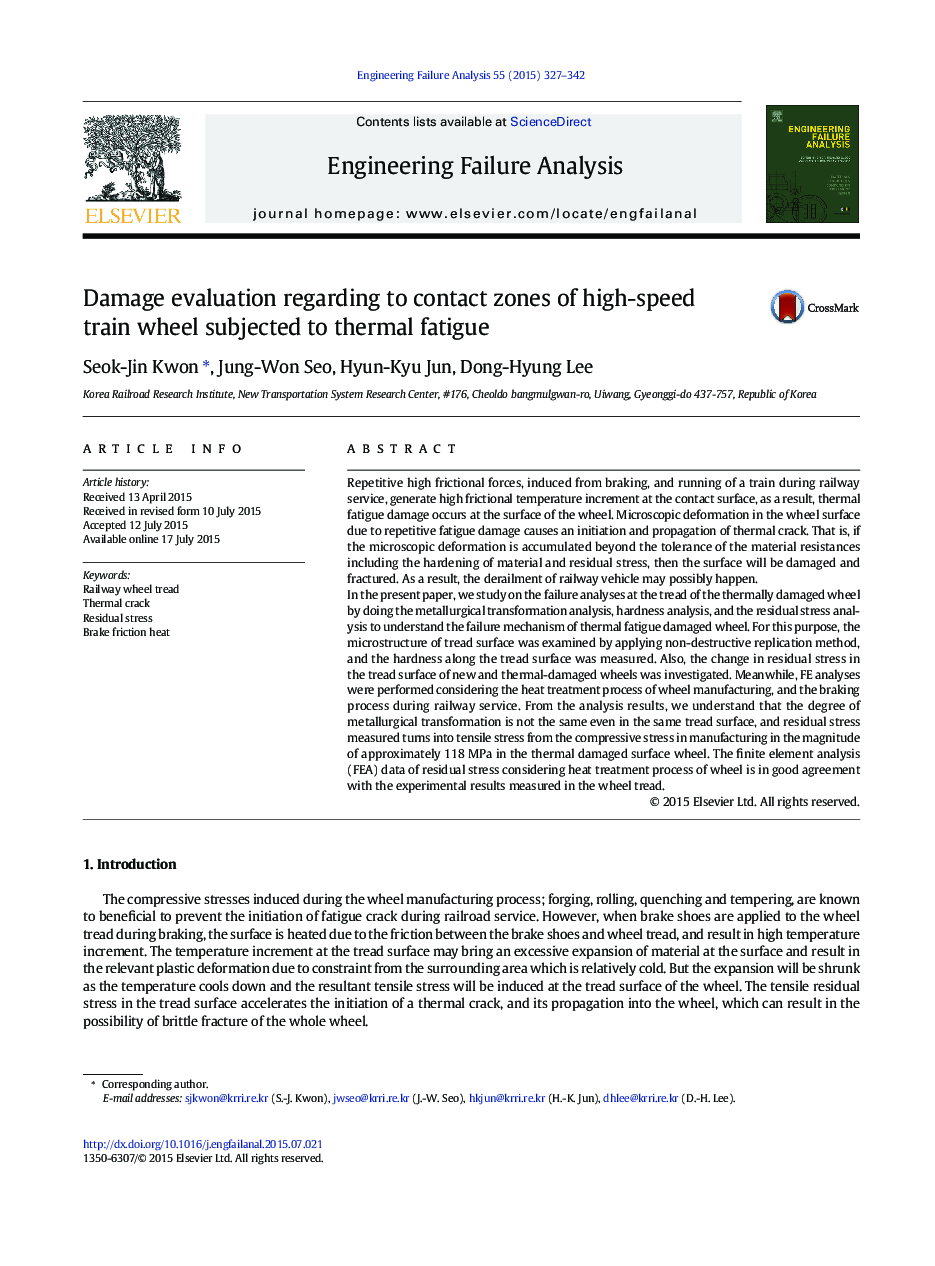| کد مقاله | کد نشریه | سال انتشار | مقاله انگلیسی | نسخه تمام متن |
|---|---|---|---|---|
| 763354 | 1462970 | 2015 | 16 صفحه PDF | دانلود رایگان |
• The metallurgical changes depends on the contact zone of the wheel tread are observed.
• The tensile residual stress is detected in the thermal damaged wheel.
• The crack generation mainly occurs in the wheel rim under high speed braking.
• The rim cracking is due to the thermal influence not rolling contact of the rail.
Repetitive high frictional forces, induced from braking, and running of a train during railway service, generate high frictional temperature increment at the contact surface, as a result, thermal fatigue damage occurs at the surface of the wheel. Microscopic deformation in the wheel surface due to repetitive fatigue damage causes an initiation and propagation of thermal crack. That is, if the microscopic deformation is accumulated beyond the tolerance of the material resistances including the hardening of material and residual stress, then the surface will be damaged and fractured. As a result, the derailment of railway vehicle may possibly happen.In the present paper, we study on the failure analyses at the tread of the thermally damaged wheel by doing the metallurgical transformation analysis, hardness analysis, and the residual stress analysis to understand the failure mechanism of thermal fatigue damaged wheel. For this purpose, the microstructure of tread surface was examined by applying non-destructive replication method, and the hardness along the tread surface was measured. Also, the change in residual stress in the tread surface of new and thermal-damaged wheels was investigated. Meanwhile, FE analyses were performed considering the heat treatment process of wheel manufacturing, and the braking process during railway service. From the analysis results, we understand that the degree of metallurgical transformation is not the same even in the same tread surface, and residual stress measured turns into tensile stress from the compressive stress in manufacturing in the magnitude of approximately 118 MPa in the thermal damaged surface wheel. The finite element analysis (FEA) data of residual stress considering heat treatment process of wheel is in good agreement with the experimental results measured in the wheel tread.
Journal: Engineering Failure Analysis - Volume 55, September 2015, Pages 327–342
